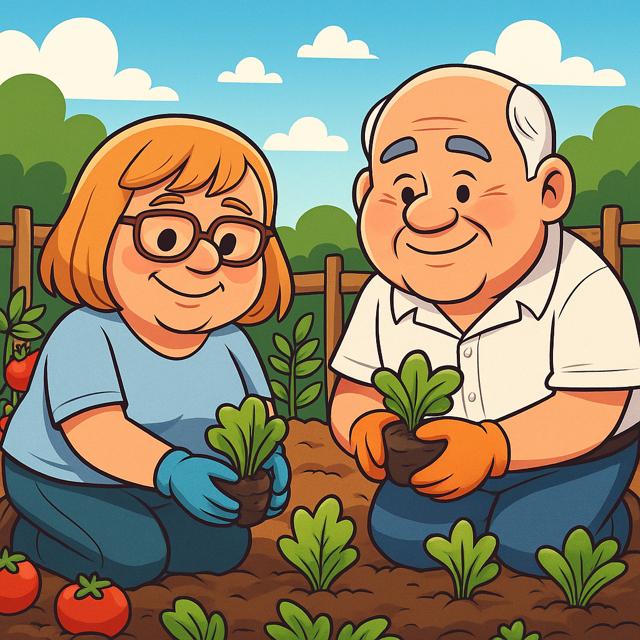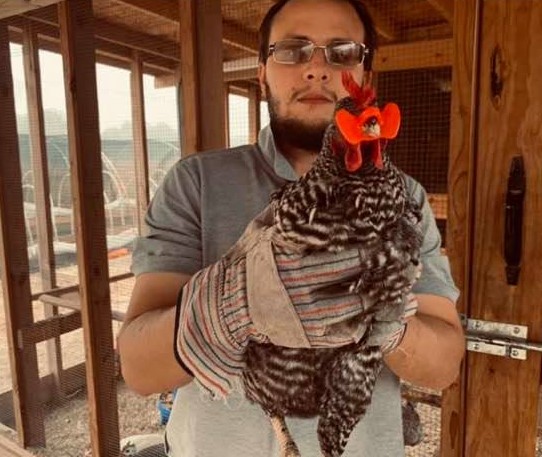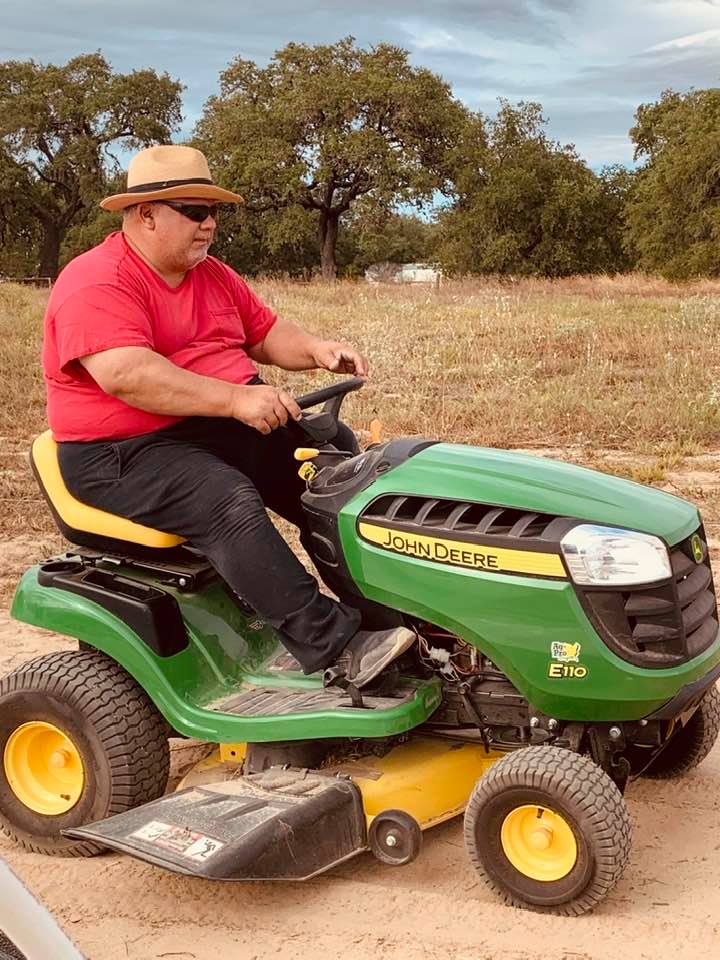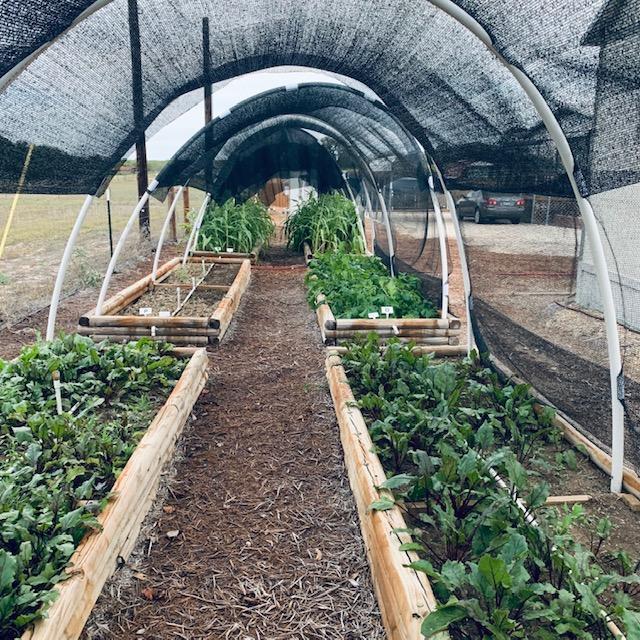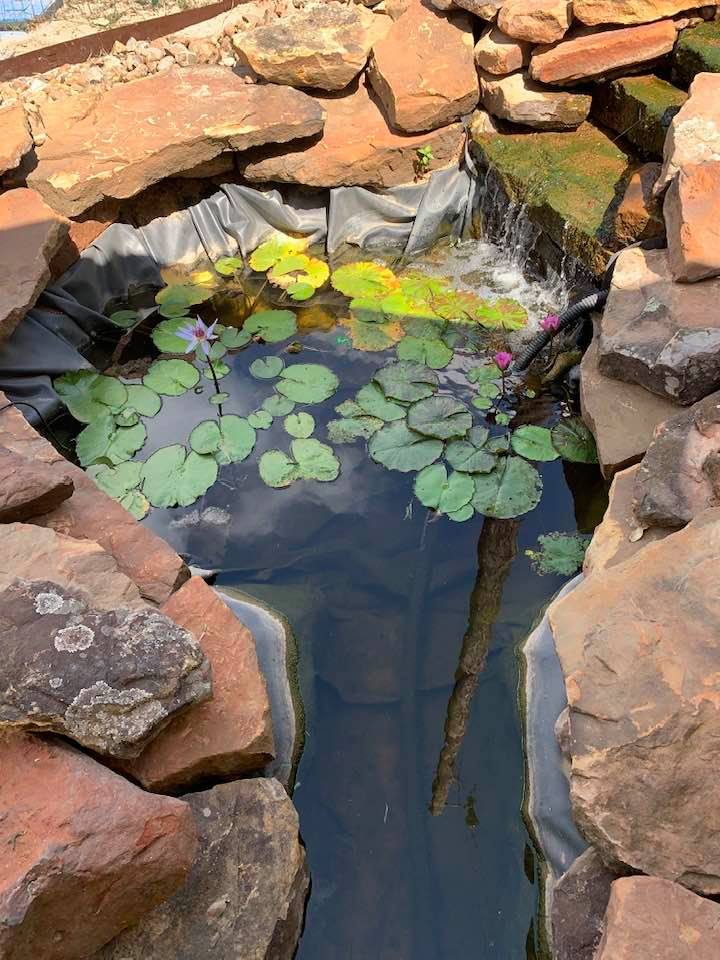Grow Cabbage
Here is a page on how to grow cabbage from seed in your backyard garden in both the spring and in the fall.
Let me tell you something exciting about growing cabbage – it's one of the most rewarding vegetables you can grow in your backyard garden.
Cabbage is a cool-season crop that absolutely thrives when temperatures are mild. Unlike tomatoes or peppers that love the heat, cabbage actually prefers the cooler weather of early spring and fall. This makes it perfect for extending your gardening season beyond the hot summer months.
If you would like to grow cabbage, David's Garden Seeds® has some wonderful heirloom varieties.
Grow Cabbage - 11/3-11/9/2025
When you grow cabbage in your garden from seed, you're not just planting a vegetable; you're starting a journey that ends with delicious, nutritious meals on your table. I remember the first time I harvested a perfect head of cabbage from my garden, and the sense of accomplishment was incredible.
You might be wondering why you should bother growing cabbage when you can just buy it at the store. Well, homegrown cabbage tastes completely different from store-bought varieties. It's fresher, crisper, and has a sweetness that you just can't find in cabbages that have traveled hundreds of miles to reach your grocery store.
Grow Cabbage - Understanding Different Types of Cabbage
 Grow cabbage like Ruby Perfection, a reddish purple cabbage.
Grow cabbage like Ruby Perfection, a reddish purple cabbage.Before you start planting, you need to know that not all cabbages are created equal. There are several types of cabbage, each with its own characteristics, growing requirements, and culinary uses. Let's explore the wonderful world of cabbage varieties.
Green cabbage is probably what comes to mind when you think of cabbage. It's the most common type, with smooth, tightly packed leaves that form a round head. Green cabbage is incredibly versatile in the kitchen and stores exceptionally well.
Red cabbage, also called purple cabbage, has beautiful deep purple-red leaves. It's packed with even more nutrients than green cabbage, particularly antioxidants. The color makes it stunning in salads and slaws, and it adds a gorgeous hue to any dish.
Savoy cabbage has crinkled, textured leaves that are more tender than regular green cabbage. The leaves are looser and more delicate, making it perfect for dishes where you want a softer texture. Many people find Savoy cabbage easier to digest than other varieties.
Napa cabbage, also known as Chinese cabbage, has an oblong shape with pale green, frilly leaves. It's milder and sweeter than regular cabbage and is commonly used in Asian cuisine. If you love stir-fries and kimchi, Napa cabbage is your friend.
Early season cabbages mature quickly, usually in about 50-60 days. These are perfect for spring planting when you want to harvest before the summer heat arrives. They tend to be smaller but are incredibly tender and sweet.
Late season or storage cabbages take longer to mature, often 80-100 days, but they form larger, denser heads that can be stored for months. These are ideal for fall planting and winter storage, giving you fresh cabbage well into the cold months.
Grow Cabbage - Starting Cabbage from Seed
 Grow cabbage like the Early Jersey cabbage.
Grow cabbage like the Early Jersey cabbage.Growing cabbage from seed gives you more variety options and is more economical than buying transplants. Plus, there's something deeply satisfying about nurturing a plant from its very beginning. When you grow cabbage in your garden from seed, you control every aspect of its development.
You can start cabbage seeds indoors or direct sow them in your garden. For early spring crops, I recommend starting seeds indoors about 6-8 weeks before your last expected frost date. This gives your seedlings a head start and protects them from unpredictable early spring weather.
For fall crops, you can either start seeds indoors in mid-summer or direct sow them in your garden. I've had success with both methods, but direct sowing in summer can be tricky because the soil is warm and cabbage seeds prefer cooler conditions.
To start seeds indoors, fill seed trays or small pots with quality seed-starting mix. Plant seeds about ¼ inch deep and keep the soil consistently moist. Cabbage seeds germinate best at temperatures between 60-70°F.
You should see sprouts emerging within 5-10 days. Once they pop up, make sure they get plenty of light. A sunny windowsill works, but a grow light is even better to prevent leggy, weak seedlings.
When your seedlings develop their first true leaves (the second set of leaves that appear), you can transplant them into larger containers. This gives their roots more room to develop before they go into the garden.
Grow Cabbage - Preparing Your Garden for Cabbage
 Here is some red cabbage David grew in the sand here on the farm.
Here is some red cabbage David grew in the sand here on the farm.Cabbage plants are heavy feeders, meaning they need nutrient-rich soil to produce those beautiful, dense heads. Before planting, work plenty of compost or well-rotted manure into your garden bed. I usually add about 2-3 inches of compost and mix it thoroughly into the top 6-8 inches of soil.
Cabbage prefers slightly acidic to neutral soil with a pH between 6.0 and 7.5. If you're not sure about your soil pH, it's worth getting a soil test. Your local extension office can usually help with this, and it's an inexpensive way to ensure your garden success.
Choose a location that gets at least 6 hours of direct sunlight daily. While cabbage tolerates partial shade better than many vegetables, it still needs good light to form solid heads. More sun generally means bigger, better cabbages.
Good drainage is essential. Cabbage doesn't like to sit in waterlogged soil, which can lead to root rot and other diseases. If your soil is heavy clay, consider building raised beds or adding lots of organic matter to improve drainage.
Grow Cabbage - Transplanting Cabbage Seedlings
 Grow cabbage like this Asian variety, Chinese minuet.
Grow cabbage like this Asian variety, Chinese minuet.Before moving your indoor-started seedlings to the garden, they need to be hardened off. This means gradually exposing them to outdoor conditions over 7-10 days. Start with just an hour or two outside in a protected spot, then gradually increase their time outdoors.
For spring planting, transplant your seedlings when they're about 3-4 inches tall and have several true leaves. The soil temperature should be at least 40°F, and all danger of hard frost should have passed. Light frosts won't hurt established cabbage plants, but they can damage tender seedlings.
Space your cabbage plants 12-24 inches apart, depending on the variety. Early, smaller varieties can be closer together, while large storage cabbages need more room. I've learned that proper spacing is crucial – crowded plants compete for nutrients and are more susceptible to disease.
Dig holes slightly larger than your seedling's root ball. Plant them at the same depth they were growing in their containers, or slightly deeper. Firm the soil around each plant and water thoroughly to eliminate air pockets around the roots.
For fall crops, plant your seedlings in mid to late summer, typically 6-8 weeks before your first expected fall frost. The exact timing depends on your climate and the variety you're growing. Check the days-to-maturity on your seed packet and count backward from your first frost date.
Grow Cabbage - Caring for Growing Cabbage Plants
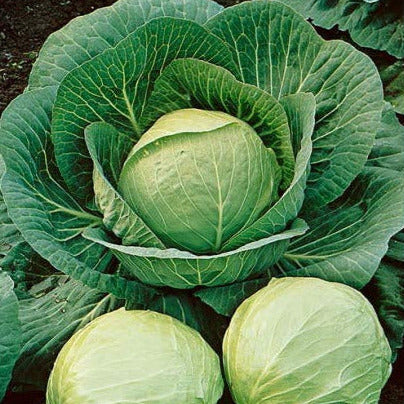 Grow cabbage like the Early Dutch Round cabbage.
Grow cabbage like the Early Dutch Round cabbage.Consistent watering is absolutely critical for growing great cabbage. These plants need about 1-1.5 inches of water per week, either from rain or irrigation. Inconsistent watering can cause heads to split or fail to form properly.
I prefer to water deeply and less frequently rather than giving shallow, frequent waterings. This encourages roots to grow deeper, making plants more drought-resistant. Early morning watering is best because it allows leaves to dry during the day, reducing disease risk.
Mulching around your cabbage plants helps retain moisture, suppress weeds, and keep soil temperatures more consistent. I use 2-3 inches of organic mulch like straw or shredded leaves, keeping it a few inches away from the plant stems to prevent rot.
Cabbage plants benefit from regular feeding throughout the growing season. I side-dress my plants with compost or a balanced organic fertilizer every 3-4 weeks. You can also use a diluted liquid fertilizer every two weeks if you prefer.
Watch out for common cabbage pests like cabbage worms, aphids, and flea beetles. Cabbage worms are the larvae of white butterflies you'll see fluttering around your garden. They can quickly devour cabbage leaves if left unchecked.
Row covers are your best defense against many cabbage pests. Install them right after transplanting and keep them in place until harvest. The covers create a physical barrier that prevents pests from reaching your plants while still allowing light, air, and water through.
If you notice cabbage worms despite your best efforts, you can handpick them off or use Bt (Bacillus thuringiensis), an organic pesticide that specifically targets caterpillars without harming beneficial insects.
Diseases like black rot and clubroot can affect cabbage. Prevention is key – practice crop rotation, never planting cabbage family crops in the same spot more than once every three years. Good air circulation and avoiding overhead watering also help prevent disease.
Grow Cabbage - Harvesting Your Cabbage
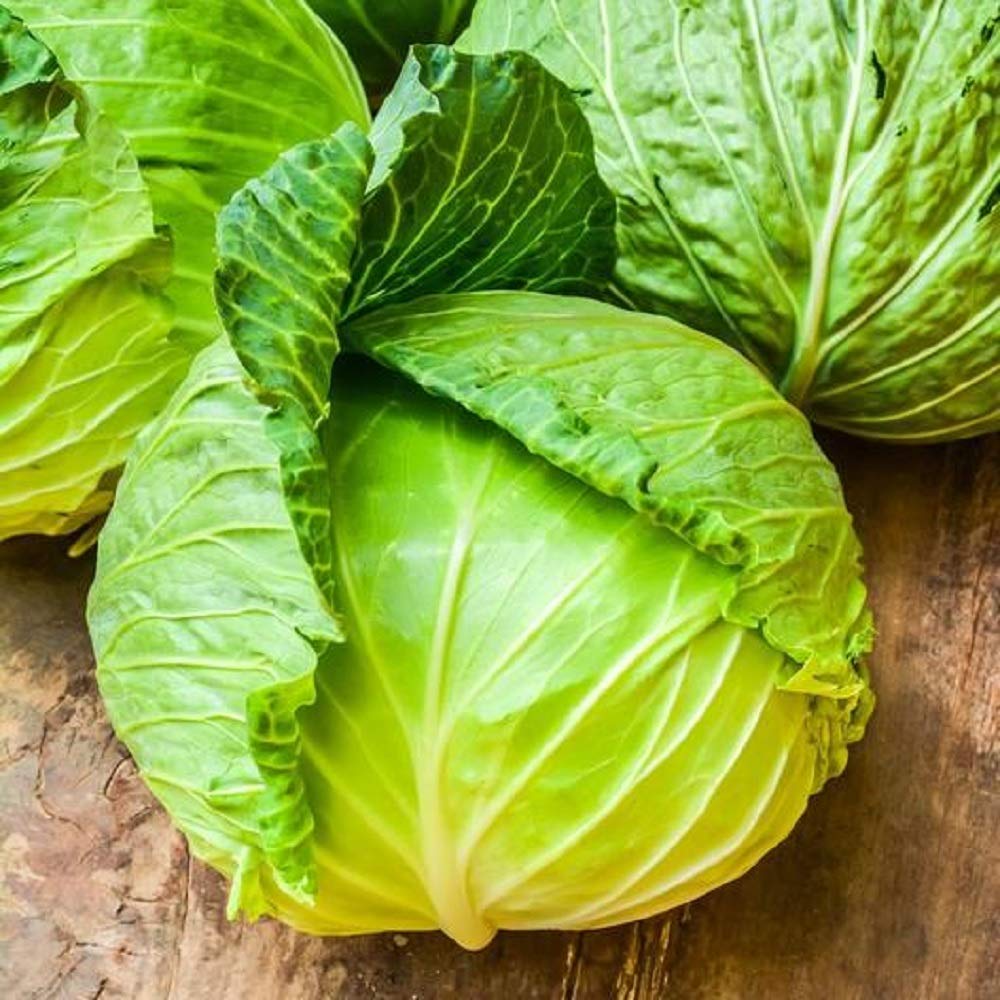 Grow cabbage like the Brunswick cabbage.
Grow cabbage like the Brunswick cabbage.Knowing when to harvest cabbage takes a bit of practice, but you'll get the hang of it. Most cabbages are ready when the heads feel firm and solid when you squeeze them gently. The size will depend on the variety, but don't wait too long or heads may split.
To harvest, use a sharp knife to cut the head at its base, leaving the outer leaves and stem in the ground. Sometimes, if you leave the stem and roots in place, small secondary heads will form that you can harvest later.
For spring cabbage, try to harvest before temperatures consistently reach the 80s. Heat causes cabbage to bolt (go to seed) and become bitter. Fall cabbage can handle light frosts, which actually improve its flavor by making it sweeter.
If you're growing storage varieties for winter keeping, harvest them before hard freezes arrive. A light frost is fine and even beneficial, but temperatures below 25°F can damage the heads.
Grow Cabbage - How to Store Cabbage
 Grow cabbage like Red Acre cabbage.
Grow cabbage like Red Acre cabbage.Proper storage is crucial if you want to enjoy your homegrown cabbage for months after harvest. When you know how to store cabbage correctly, you can have fresh vegetables well into winter. This is one of the great advantages of growing storage varieties.
For short-term storage, simply place unwashed cabbage heads in your refrigerator's crisper drawer. They'll keep for several weeks this way. Don't wash cabbage until you're ready to use it, as excess moisture can promote rot.
For long-term storage, you need a cool, humid environment. A root cellar is ideal, but a basement, garage, or even a spare refrigerator works well. The temperature should be between 32-40°F with high humidity (90-95%).
When storing cabbage long-term, leave a few outer leaves on the head and keep some of the stem attached. This protective layer helps prevent moisture loss. Check stored cabbages regularly and remove any that show signs of decay.
You can also store cabbage by hanging it. Pull up the entire plant, roots and all, and hang it upside down in your storage area. This traditional method works surprisingly well and can keep cabbage fresh for several months.
Grow Cabbage - Raw Preparations
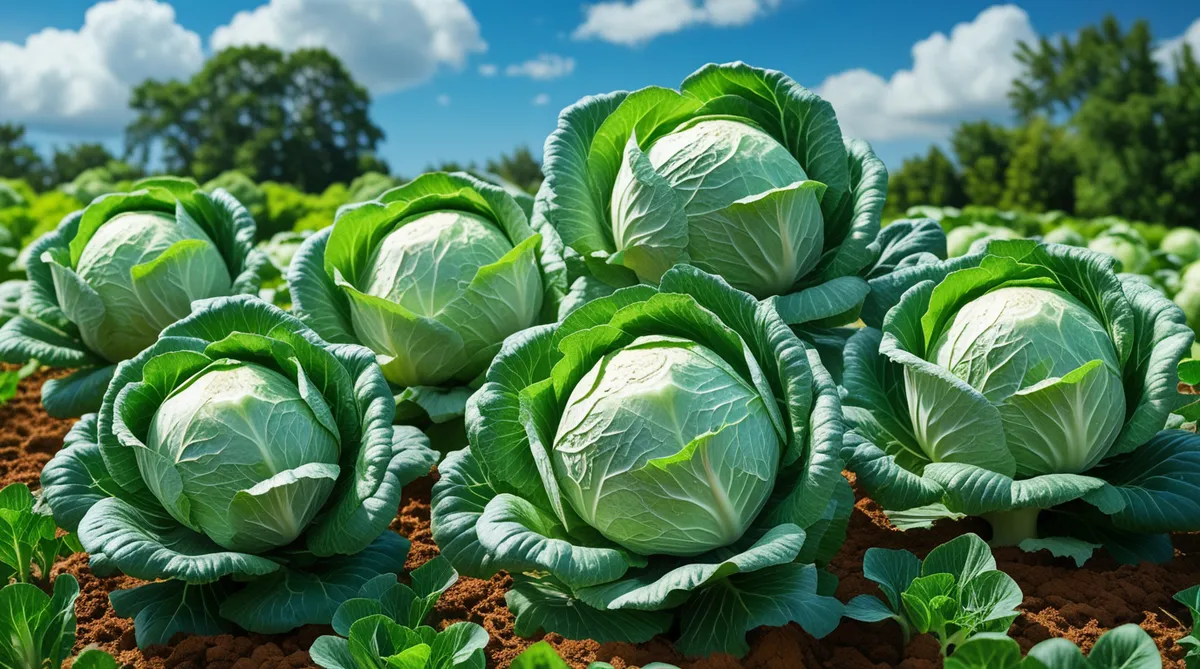 Plant a few cabbage seeds a week so it does not all ripen at once.
Plant a few cabbage seeds a week so it does not all ripen at once.One of the best things about cabbage is its incredible versatility in the kitchen. You can eat it raw, cooked, or fermented, and each method brings out different flavors and textures. When you cook with cabbage, you're working with a vegetable that's been a staple in cuisines around the world for thousands of years.
Raw cabbage is crunchy, slightly peppery, and refreshing. The most popular raw preparation is coleslaw, which is perfect for summer barbecues and picnics. To make basic coleslaw, thinly slice cabbage, add shredded carrots, and toss with a dressing made from mayonnaise, vinegar, sugar, and seasonings.
For a lighter version, try a vinegar-based slaw instead of a creamy one. Mix shredded cabbage with a dressing of apple cider vinegar, olive oil, a touch of honey, salt, and pepper. This style of slaw is tangy, refreshing, and pairs wonderfully with rich, fatty foods.
Raw cabbage is also fantastic in salads. Thinly slice red or green cabbage and mix it with other fresh vegetables, nuts, and a zesty dressing. The crunch of raw cabbage adds great texture to any salad.
You can use cabbage leaves as wraps for a low-carb alternative to tortillas or bread. Blanch large outer leaves briefly to make them pliable, then fill them with your favorite ingredients – ground meat, rice, vegetables, or whatever you like.
Grow Cabbage - Cooking with Cabbage
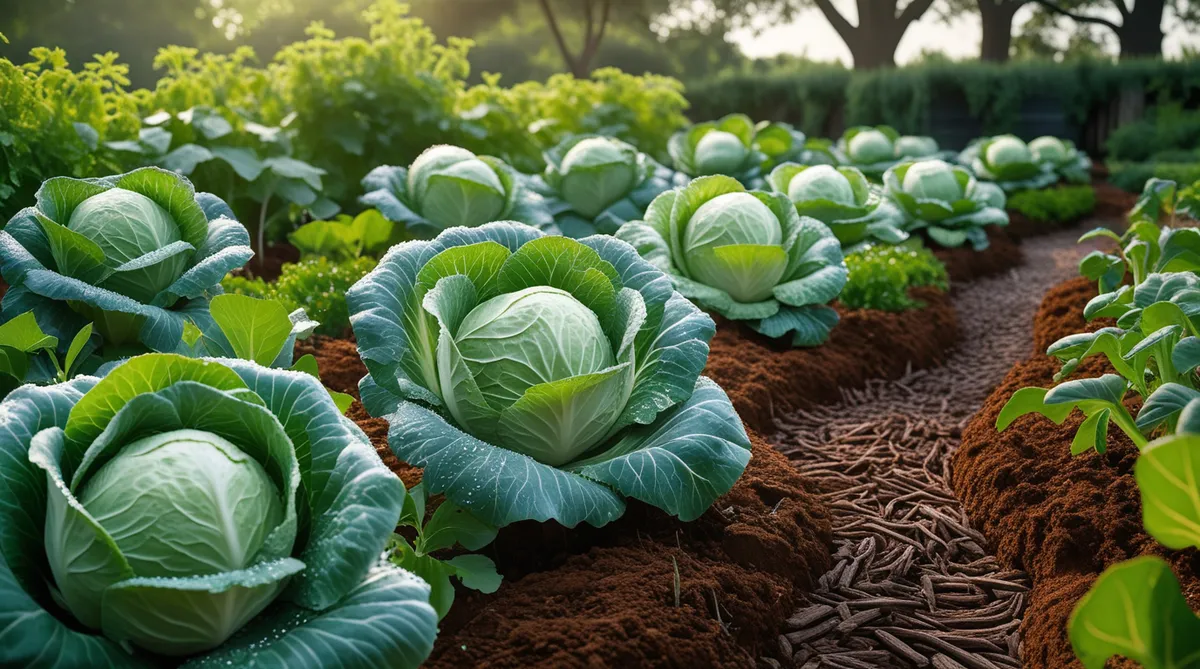 Grow cabbage in your garden in the spring and in the fall.
Grow cabbage in your garden in the spring and in the fall.Cooked cabbage transforms completely from its raw state. It becomes tender, sweet, and develops a rich, complex flavor. One of my favorite ways to prepare cabbage is roasting cabbage steaks. Simply slice the cabbage into thick rounds, brush with oil, season with salt and pepper, and roast at 400°F until the edges are caramelized and crispy.
Sautéed cabbage is quick, easy, and delicious. Slice cabbage thinly, heat some butter or oil in a large skillet, add the cabbage with some onions, and cook until tender and lightly browned. Season with salt, pepper, and a splash of vinegar at the end for brightness.
Cabbage is essential in many traditional dishes. German cuisine features braised red cabbage with apples and vinegar, which is sweet, tangy, and pairs perfectly with pork or sausages. Cabbage rolls, found in many Eastern European cuisines, consist of cabbage leaves wrapped around a savory filling and simmered in tomato sauce.
Asian cuisines use cabbage extensively in stir-fries. The key is to cook it quickly over high heat so it stays slightly crisp. Napa cabbage is particularly good for this, but regular green cabbage works too.
Cabbage makes excellent soup. Whether it's a simple cabbage and potato soup or a hearty borscht with beets and cabbage, this vegetable adds body, nutrition, and flavor to any soup pot.
Grow Cabbage - Fermenting and Preserving Cabbage
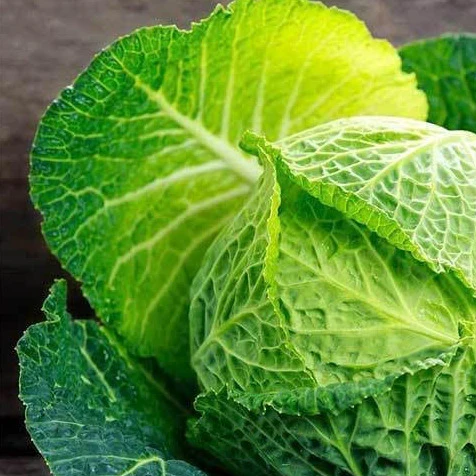 Grow cabbage like Savoy Perfection cabbage which has an interesting texture and a mild, sweet flavor.
Grow cabbage like Savoy Perfection cabbage which has an interesting texture and a mild, sweet flavor.Fermenting cabbage to make sauerkraut is one of the oldest preservation methods and creates a probiotic-rich food that's incredibly good for your gut health. To make basic sauerkraut, thinly slice cabbage, massage it with salt until it releases liquid, pack it tightly into a jar, and let it ferment at room temperature for several weeks.
The fermentation process transforms cabbage into something tangy, complex, and deeply flavorful. Homemade sauerkraut tastes nothing like the canned stuff from the store. You can add caraway seeds, juniper berries, or other spices to customize the flavor.
Besides fermentation, you can preserve cabbage by freezing or canning. Blanched cabbage freezes reasonably well, though it loses some of its crisp texture. Canning is great for making pickled cabbage or preserving cooked cabbage dishes.
When you grow cabbage in your garden from seed and then preserve it, you're creating a sustainable food source that connects you to traditional foods and ensures you have nutritious vegetables available year-round. There's something deeply satisfying about opening a jar of homemade sauerkraut in the middle of winter, knowing you grew the cabbage yourself from a tiny seed.
David's Garden Seeds® offers seeds for excellent cabbage varieties that are perfect for home gardeners. Their seeds are reliable, and when you start with quality seeds, you're already setting yourself up for success. Quality matters when you're investing time and effort into your garden.
Monday, November 3, 2025
 The sun went down as I was finishing up with the goats. Then I went over and got the 2 eggs as I put the chickens away.
The sun went down as I was finishing up with the goats. Then I went over and got the 2 eggs as I put the chickens away.Good morning. I slept fairly well but each time I woke up, my leg was hurting from yesterday's injury. It is 50° and cool, not yet 7am. I have been up for an hour trying to get last week's page completed.
I chopped vegetables and put them in the crockpot to go with dinner--potatoes, carrots, onions, and mushrooms. I cooked them in beef broth.
Some friends of ours hunted some deer last week and they made deer bacon and deer sausage and gave some to us. We made the bacon for breakfast and I was afraid to try it. I finally did and it was delicious. I wish they had given us more.
The day was a fast one with no customers. I guess it is just that time of year again.I filled orders and then counted a bunch of seeds.
I got two eggs this evening. It was almost time for the sun to set and Matt was still busy working so I went out and took care of the animals.
 This plane was going overhead while I was taking care of the goats tonight.
This plane was going overhead while I was taking care of the goats tonight.David made the sausage and it was pretty good, not as good as the bacon though.
I made some rolls from scratch for dinner and they were pretty good. The house smells so good from them baking.
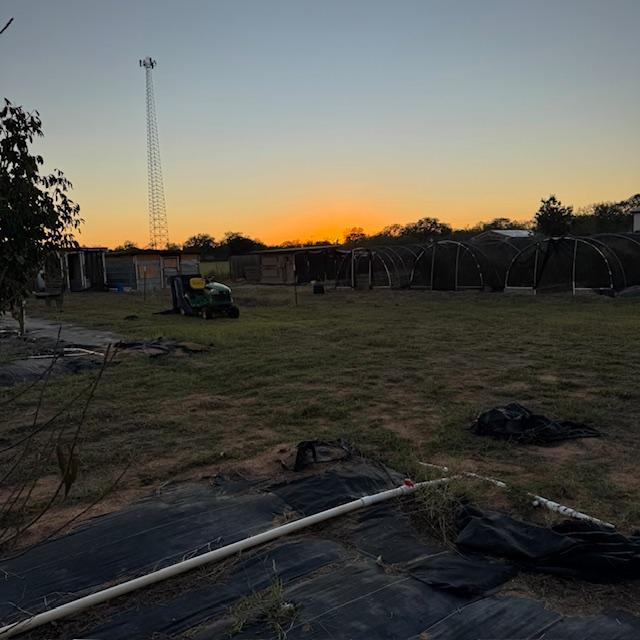 The sun went down as I was finishing up with the goats. Then I went over and got the 2 eggs as I put the chickens away.
The sun went down as I was finishing up with the goats. Then I went over and got the 2 eggs as I put the chickens away.Six years ago, I told David I wanted to buy and plant some pine trees in our orchard so we bought four of them. They have gotten so big and the moon looked beautiful this evening.
 The full moon was up between the pine trees this evening.
The full moon was up between the pine trees this evening.Tuesday, November 4, 2025
Good morning. I woke up way too early, at 5:03am and could not get back to sleep. So I got up to work. David and the dogs are still asleep. I have a cup of mushroom coffee and some grapes and I am trying to stay as quiet as possible.
I made sausage and eggs for breakfast and then got ready for work. David's friend was here helping do various chores around the farm again. Matt helped him. I pulled orders and then started closing them. Now I am counting and packing seeds.
At 2:30pm, we drove down the road to the community center and voted on about 14 propositions. That took a while. Now I am counting seeds again.
Matt played with the gate timer so hopefully it is right with the time change. I am so tired from the stupid time change. I cannot get used to it and I am waking up way too early.
We have had zero in person customers again. I think it has been about a week since we have had any customers.
 The full moon looked lovely tonight as the sun went down.
The full moon looked lovely tonight as the sun went down.Wednesday, November 5, 2025
Well, good morning. Lots of things are changing for us as I learned early this morning. It is 54° and the high should be 86° which is insane in November. Summer is re-approaching quickly.
Yesterday, the folks in New York City voted to ruin the city by elected a communist Muslim who will destroy it. I am so disgusted. They said they would never forget 9/11 but they did in just over 24 years.
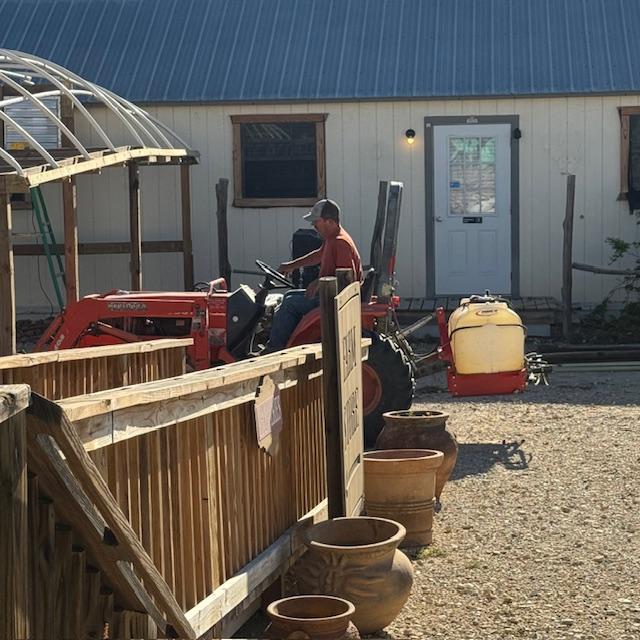 A friend from church has been helping David get some chores done around the farm.
A friend from church has been helping David get some chores done around the farm.David's friend is here working on some sort of farm machinery and helping him in so many ways around the farm. Matt has been assisting him a lot over the past few weeks.
I pulled orders and counted seeds. David took Pamela and Sue Ellen for nail trims this afternoon.
The pond waterfall all of a sudden stopped this afternoon. I noticed as I looked out of the Farm Store window. It turns out one of the pumps in the inner pond died. Matt got one of the waterfalls back on and he will have to replace the pump tomorrow.
David is now taking over my kitchen and frying chicken gizzards which means I will have a mess to clean up in a little while.
Today was super hot. It got up to 84° and I was burning up every time I had to walk outside. I changed from my jeans to shorts again. Winter is over and summer is back in South Central Texas. I am not happy about that.
There were two new stray kittens here this afternoon, one tan, black, and white and the other black.
I just took the food away for the night because Sammie the kitten is having surgery tomorrow and cannot eat after 6pm. I was afraid I would forget to go back over at 6 so I put it away a bit early. I have to get her in the carrier before 7am. She has to be at the vet's office by 7:30am. I am hoping it goes smoothly.
Thursday, November 6, 2025
 Sunrise with fog this morning.
Sunrise with fog this morning.Good morning. It is foggy and 62°. It should be 88° today unfortunately. I was enjoying our one week of autumn but summer is back.
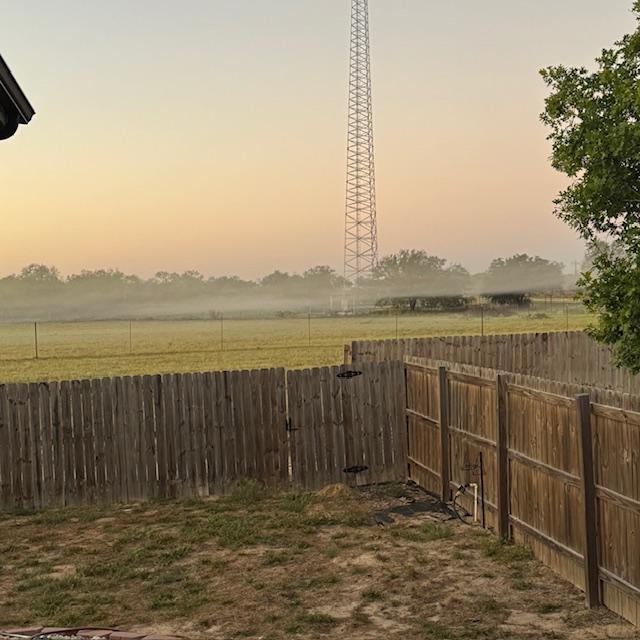 Fog by the cell tower out front... Fog by the cell tower out front... |
 Fog on the road... Fog on the road... |
 Look at this crazy fog. My plant area is in the foreground.
Look at this crazy fog. My plant area is in the foreground.This morning, I had to get Sam the kitty loaded up in her carrier and take her to the vet so she can get spayed. She was so happy to see me early because she was so hungry. I took her food dish away yesterday at 5pm because she could not eat after 6pm. She thought she would be getting food but she got confined instead. We left for the vet before 7am and got there 14 minutes early. At least 10 staff members went in while we waited and none of them were the doctors.
Finally, they unlocked their door at 7:30am and I took Sam in. She meowed quite a bit on the ride over and once inside, she continued. She will be spending the night at the vet because she has to be inside tonight and I am not bringing her in our home without a litter box. No more indoor cats for me. I had to clean the litter box out for 15 years and that is more than enough of that disgusting job.
David has an early morning haircut and shave scheduled so he can pick her up on the way home tomorrow. I, too, have a hair appointment tomorrow but later.
We stopped by McDonald's on the way back today for breakfast. I saw something new--a steak and egg on bagel sandwich. It took them 15 minutes to make but it was delicious! I will be having it again. I love bagels and the steak was juicy along with fried onion and an egg with cheese.
It is time to go to work now.
At 10:30am, the vet's office called to say that Sam was all done with her surgery and did well. We will pick her up tomorrow morning. She will probably think we abandoned her. Poor baby.
Shortly before noon today, we had our first in-person customer in over a week! Can you believe it? He just bought a few packs of bluebonnets.
It is Gordon Ramsay night. I have decided to make sausage balls. I have never made them before but will give it a try and see how we like them.
I have been counting seeds all afternoon. Candace Owens is about to come on live. I have been watching since the whole Charlie Kirk thing. I have to agree with her on his murder being an inside job. That kid they arrested does not look like he would have the smarts to pull it off on his own. The whole thing is very suspicious and sad.
Friday, November 7, 2025
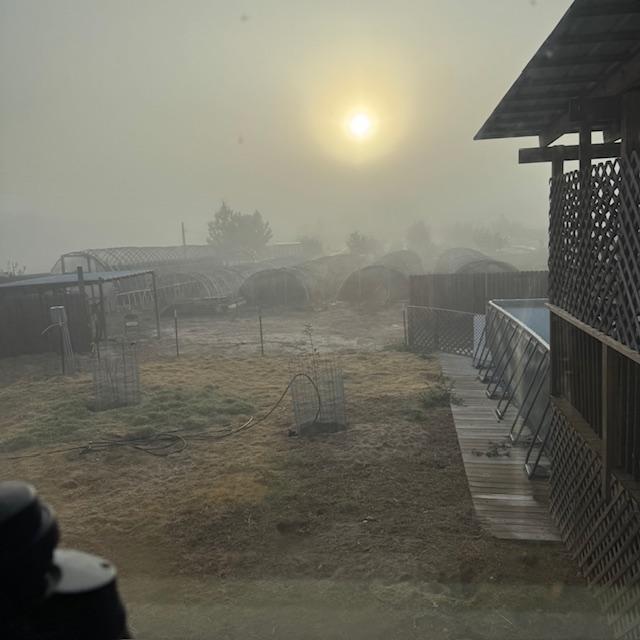 It was a foggy sunrise this morning. It was a foggy sunrise this morning. |
 The cell tower by our house appears to be gone in the fog. The cell tower by our house appears to be gone in the fog. |
Good morning. It is 56° and incredibly foggy this morning. The high will be 92°. Like I said earlier, summer is back in Texas.
David left the farm before 7am to get his hair cut and Matt had a 7am appointment. I go at 10am. The Farm Store is closed this afternoon.
David will be picking up Samantha Kitty this morning after his barber appointment. She spent the night at the vet's office inside so I did not have to bring her inside here without a litter box. David threw our litter box away as we will not be having any more indoor cats.
David brought Sam home and she started eating right away. She was so happy to be here.
I went to get my hair done and it looks fabulous! Now we are back at work for a little while longer.
The new greenhouse is taking shape. Today, it got a door.
While I was gone, we had one customer here.
 Leakey Football Stadium where my husband once played football from 1974-1978 in Leakey, Texas.
Leakey Football Stadium where my husband once played football from 1974-1978 in Leakey, Texas.We closed up shop at 4pm and headed for the Leakey football stadium. Back in 1975, 50 years ago, my husband, David, was a part of the Leakey ISD 8 man football team that went to state and won. If you have ever visited Leakey, Texas, as you enter the town, you may have noticed a sign that talks about this 1975 8 man football team.
Tonight, at halftime, the surviving members of that team will be honored on the football field.
 The 2025 Leakey football team came out of the blowup with red smoke running. David said the 1975 team considered it but decided to walk instead! Lol!
The 2025 Leakey football team came out of the blowup with red smoke running. David said the 1975 team considered it but decided to walk instead! Lol! David is stepping out of the blowup as the 1975 Leakey Eagles Football Team comes onto the field 50 years later to be celebrated for being the last 8 man team to win at state!
David is stepping out of the blowup as the 1975 Leakey Eagles Football Team comes onto the field 50 years later to be celebrated for being the last 8 man team to win at state!We all got Leakey Eagle shirts with the player numbers and names on the back. Matthew and I proudly donned red shirts with "SCHULZE" and "60" on the back.
 2 of the 1975 cheerleaders joined the kids for a cheer and photo.
2 of the 1975 cheerleaders joined the kids for a cheer and photo.A few of the 1975 cheerleaders did a cheer with the current cheerleading squad.
 The Leakey 1975 football state champions 50 years later! Cheerleaders and team helpers included. David is in the second row toward the left.
The Leakey 1975 football state champions 50 years later! Cheerleaders and team helpers included. David is in the second row toward the left.At halftime, all of the players and cheerleaders from the 1975 team went to the field and came through the little blowup house. Family members stood in for the players who are no longer living. David's older brother, Johnny, was on the team but passed away last summer so his younger brother, Gene, stood in for him. Each player was given a lovely plaque.
 A team huddle before leaving the field at halftime.
A team huddle before leaving the field at halftime.David enjoyed seeing his old teammates, especially his best friend from high school, Mario. The last time we saw Mario, maybe 15 years ago, he was very ill. This evening, he walked up to us and I did not have a clue who he was. He looked great. David is next to him in most of the photos I took of the team.
 David and his best buddy, Mario. David's younger brother, Gene, stood in for their deceased brother, Johnny, who was on this team--he's the one in shorts. David and his best buddy, Mario. David's younger brother, Gene, stood in for their deceased brother, Johnny, who was on this team--he's the one in shorts. |
 David, #60, and Mario walk out to the blowup to enter the field. David, #60, and Mario walk out to the blowup to enter the field. |
The Leakey team scored 77 points in the first two quarters while the visiting team scored 13 so the second half of the game was canceled. Right after David came off the field, we jumped back in the truck and headed for home. We arrived just before 10pm.
 A plaque was handed to each player or player's representative. I think they are very nice!
A plaque was handed to each player or player's representative. I think they are very nice!The dogs were so happy to see us and they didn't tear up too much of the den.
Saturday, November 8, 2025
Good morning! I just finished setting up a new sale that starts right now. All of our summer squash, winter squash, and zucchini seeds are on sale now through next Friday night for 20% off as we prepare for planting in the spring of 2026!
We have had no in-person customers. The mailman made it just before the gate closed.
There are two men here once again working to prepare the buildings their boss bought months ago to move. Many weeks ago, they spent seven hours here on a Saturday. Their boss came by this morning to move the buildings only to discover that they still are not ready to be moved. So they are here making all sorts of noise again. I wonder how many more days they will have to come and work to get just one of the three buildings ready to move.
I am certainly disgusted that it is taking this long. You would think the boss would come and see what it is they are doing, right? They are sawing an awful lot of boards. They already did that last time they were here.
At 2:30pm, David and I went to HEB for some groceries. When we got back, those workers were still here. Matt stayed with them. They finally left just before 6pm, so almost another seven hours. Newsflash! The buildings are more ready but not one of them is actually ready to move yet. This man needs to hire a professional team to come and get the buildings, not his workers who don't really have a clue.
We had tamales and Spanish rice along with some other yummy things for dinner. I made homemade guacamole. I had a wonderful time eating. We watched Svengoolie. The movie was Valley of the Gwangi from 1969. Weird but fun.
Sunday, November 9, 2025
Good morning. It is very windy and chilly out. I got all of the animals taken care of, came in and showered, and finally made breakfast. It will be a bit chilly tonight with a low of 42°. We already got all of the plants inside.
David wanted to wear the red Leakey shirts today so we did. A few people commented on our shirts. They seemed to like them. I am sure there were a few who may have thought them inappropriate church wear...Whatever! I don't care. I ceased caring back when we were in ministry and each week people would tell me everything that David and I were doing wrong, including at one church...are you ready for this? Here it is: One person told me I kept the church parsonage too clean and they were upset about it. Bite me.
Oh yes. I would get the following and so many more comments:
"Your dress is too long (or too short).
"Your hair doesn't look nice like it did last week."
"Your kids look too nice."
"You bought too many groceries the other day."
"I didn't like the music."
"I didn't like the way your husband served communion.
"I didn't like his sermon."
"Tell him to stop preaching on the sin that I commit."
"The church is paying your husband too much money." (You try raising your 3 small children on $125 a week and pay back your student loans from it. Ha!)
I do not miss being a pastor's wife. No one was ever happy with anything we did. Always complaints, never compliments. We raised three wonderful children who all experienced this nonsense. Today, not one of them attends church on a regular basis.
When we got out of church today, it was windier than when we went in. We came home and ate leftovers from last night and they were delicious.
Return from Grow Cabbage to Year Seven Of Farm Life
Anything To Share On This Topic?
Would you like to share additional information about this topic with all of us?
Since 2009, over 2,000,000 home gardeners, all across the USA, have relied on David's Garden Seeds® to grow beautiful, productive gardens. Trust is at the heart of it. Our customers know David's Garden Seeds® stocks only the highest quality seeds available. Our mission is to become your lifetime supplier of quality seeds. It isn't just to serve you once; we want to earn your trust as the primary supplier of all of your garden seeds.
Watch Our 2022 TV Commercial!
Sing Along To Our Jingle
♪♫♪♪ ♫ ♪ ♫♪♫♫
♪♫♪♪♫♫
Peppers and peas
And lots of yummy greens
You can't go wrong
With Squash This Long
At David's Garden Seeds
♪ ♫ ♪ ♫
Our New 2024 TV Ad
Please like and subscribe on YouTube and come visit us at our Farm Store! The music on our TV ad was written, played, and sung by our son, Matthew Schulze. You can meet him when you come to the farm. He just might give you a tour. Ask him to grab a guitar and sing our jingle that he wrote.

We are David's Garden Seeds®. If you need great seeds, we've got over 1,200 varieties to choose from.
Subscribe To Mrs. David's Garden Seeds® Newsletter For FREE!
Find out what is going on down on the farm by reading our blog and by subscribing to our free newsletter for all of the information going down at David's Garden Seeds® and on the farm. I love to share helpful information with you. Please let your friends know and y'all come on down for a visit when you get the chance. We would love to meet you!

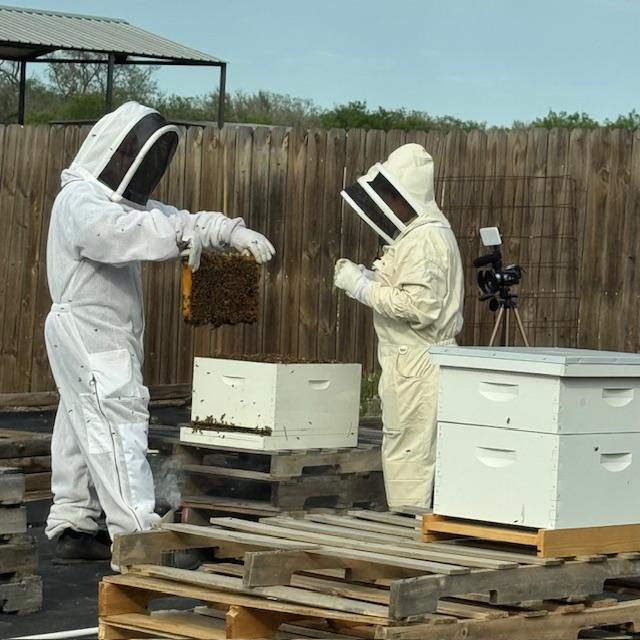 Our bee hives
Our bee hives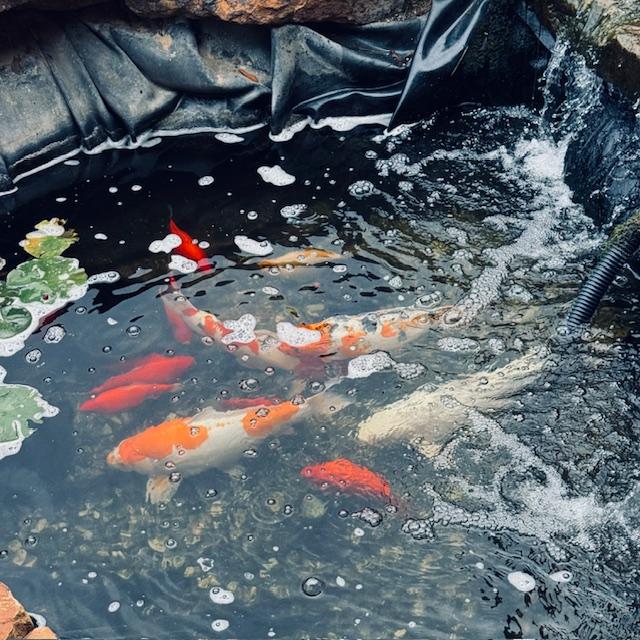 Our fish pond
Our fish pond Our chickens
Our chickens Our bunny rabbits
Our bunny rabbits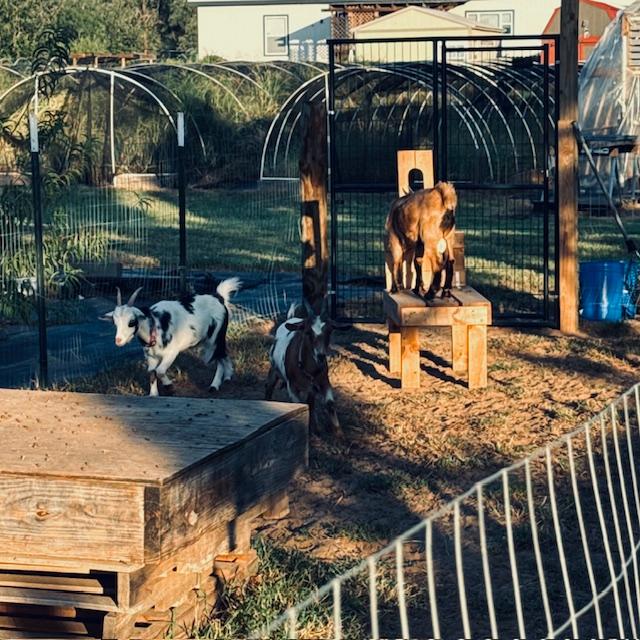 Our Nigerian Dwarf goats
Our Nigerian Dwarf goats A few of our raised garden beds
A few of our raised garden beds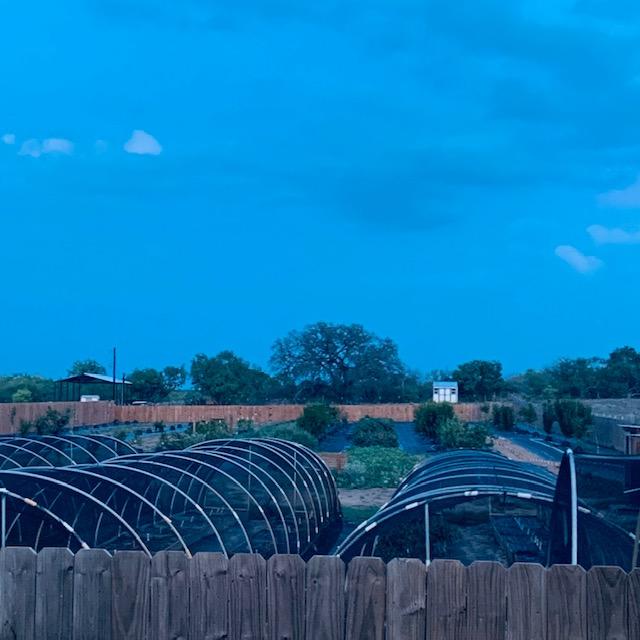 Our orchard and hoop houses
Our orchard and hoop houses Inside our high tunnel
Inside our high tunnel Take a selfie at our official selfie spot!
Take a selfie at our official selfie spot!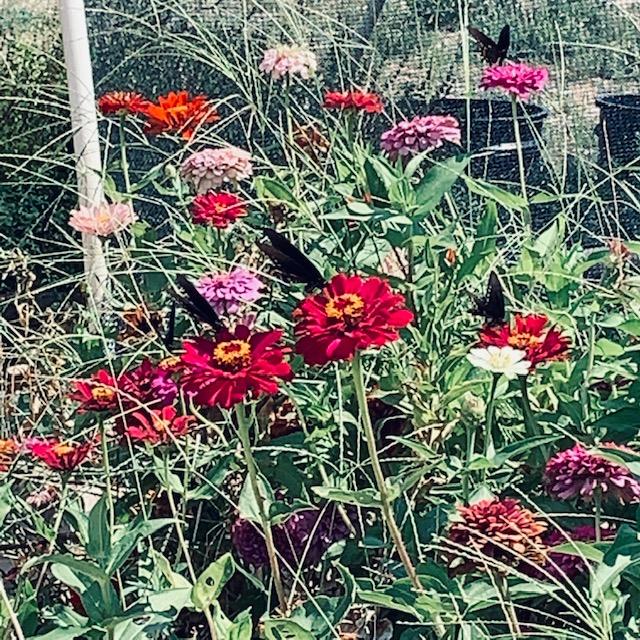 Flowers, bees, and butterflies are everywhere!
Flowers, bees, and butterflies are everywhere!